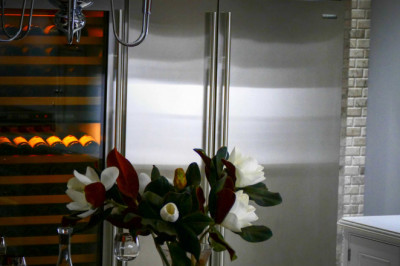views

Starting a painting business with no experience a mistake? Not necessarily. If everyone needed experience to get their ideas off of the ground, the Wright Brothers’ historic first flight would never have happened.
Some may believe that professional business painting requires experience. Yet, everyone must start somewhere. If you are driven, possess a willingness to learn, and maintain the desire to provide customers the best possible service, you are already in a good position to go far.
Asking, “Is starting a painting business a good idea when I lack this or that?” could mean talking yourself out of a great future opportunity. Instead, lean into these six helpful suggestions and lay a lasting foundation for your future in business.
STARTING A PAINTING BUSINESS WITH NO EXPERIENCE? RESEARCH FIRST!
It’s always a good idea to know what you’re getting into before you go and get into it. Unfortunately, not every entrepreneur understands the importance of market research.
It’s difficult to accurately target customers if you aren’t aware of local demographics and statistics. For instance, how many people buy new homes or how often do houses and apartments receive painting services?
Even without extensive history in the painting business, you can still gather the information that will help you form a comprehensive strategy.
1.TAKE A “SWOT” AT THE BUSINESS OF PAINTING
When starting your painting business with no experience, it’s best to understand your strengths, weaknesses, and where you should improve. Therefore, creating a SWOT (Strength, Weakness, Opportunity, and Threat) analysis is a great starting point.
A SWOT analysis is a basic framework that typically features four blank squares where you compare your company’s components to competitors occupying the same professional space.
{Graphic of SWOT Diagram}
Within the squares, list your current strengths, weaknesses, opportunities, and threats to your business or brand. For instance, a lack of direct painting experience could be a weakness, but maybe a strength is that you previously did interior decoration and have an eye for colors.
Creating an honest and detailed SWOT analysis is an excellent way to take a close look at where your painting business plan is right now, while also recognizing you have advantages that you hadn’t previously considered. It’s also a process you can revisit later on.
2.AIM FOR SCALABILITY
One thing that can be discouraging to entrepreneurs is that their business isn’t an overnight success. It’s not enough to merely want to be as big as possible. Do aim to scale your business over time, according to a pre-existing set of stipulations.
Let’s say you’re starting a painting business with no experience but want 250 customers per year within five years. Instead of merely focusing on hitting that number as fast as possible, think about how you can make adjustments after 50 customers or 100 customers. Increase marketing efforts and aim for customer retention through positive word of mouth.
Also, you do not want to make the mistake of trying to take on too many customers too quickly, causing yourself or your team to get overwhelmed and customer service to suffer. Plan a schedule where you can handle a certain amount of clients within a predetermined timeframe.
Starting a painting business from the bottom up, with no experience, can be done if you make an effort to scale your brand at a sensible pace, while intelligently marketing to and performing for customers without stretching yourself too thin in the process.
3.STUDY THE COMPETITION OF YOUR BUSINESS: PAINTING COMPANIES
You should learn what you can about what you or your team will be up against. How long has each competing company been in operation? What are their specialties?
Also, try to get an idea of any particular services their customers want that these competitors do not yet offer. Gauge reviews of their services to see where you might aim to do better.
While learning what you can, remember your goal is to stand apart. You don’t want to build your identity by offering the same services as existing painting businesses. Everything you learn about future rivals should drive you to provide better services, including options that competitors don’t offer.
4.MAKE SURE CUSTOMERS UNDERSTAND HOW YOU CAN HELP THEM
Even when starting a painting business with no experience, your communication skills can be advantageous. There’s no need to be convoluted to “make up” for lack of practical know-how. Sometimes complicated things can confuse customers, making them turn away.
Aim to offer easy-to-understand explanations about your painting services and rates through your website and consultations. Beginning a painting business without experience is challenging. Even so, make sure your message gets across. It could be a massive factor in expanding your customer base.
5.PREPARE AN OPERATIONS PLAN.
A painting business plan for a franchise can include elements from the franchise disclosure document (FDD) and operations documentation. A Teaberry Painting franchise gives you a chance to tap into the power of a tablet-based operating platform that provides an easy way to prepare estimates, set up work orders, schedule projects and build cost analyses.
6.YOUR PAINTING BUSINESS SHOULD HAVE KEY PERFORMANCE INDICATORS (KPI)
Let’s say you start a painting business. With no experience, you will need to set future markers for success. That is where key performance indicators (KPIs) come in. These milestones are measurable. With KPIs, you can accurately tell whether you or your team met the desired goal.
Common KPIs are profits, customer satisfaction, cost-effectiveness, and productivity. With your business expanding, a variety of other KPI options could come into play.
Implementing KPIs and tracking them along a predetermined timeline provides a chance to determine where things stand and what’s not working. For instance, if a KPI is customer satisfaction, and you are receiving a series of similar complaints, you can react quickly to resolve ongoing issues and assure future customer happiness.
7.BECOME A FRANCHISEE
Starting a painting business with no experience can be intimidating. However, working as part of a franchise can provide an opportunity to immediately gain first-hand knowledge and training from the franchisor. Additionally, you’ll have access to a network of experienced allies and established marketing strategies.
Teaberry Painting offers a high-quality franchisee training program. We’ll guide you through mastering our software system, identifying your appropriate territory, and providing excellent customer service.
We’re looking for driven and hardworking entrepreneurs to expand our network, as we are now registered in 35 states. You can start a painting business with no experience on your own, or you can hit the ground running as part of Teaberry Painting’s ambitious and growing brand.
Creating a thriving company isn’t solely determined by your industry experience. Is starting a painting business a good idea? It can be with the right attitude and a willingness to learn. If you have these qualities and wish to connect through our franchisee training program, please click here to download our industry outlook and learn more.












